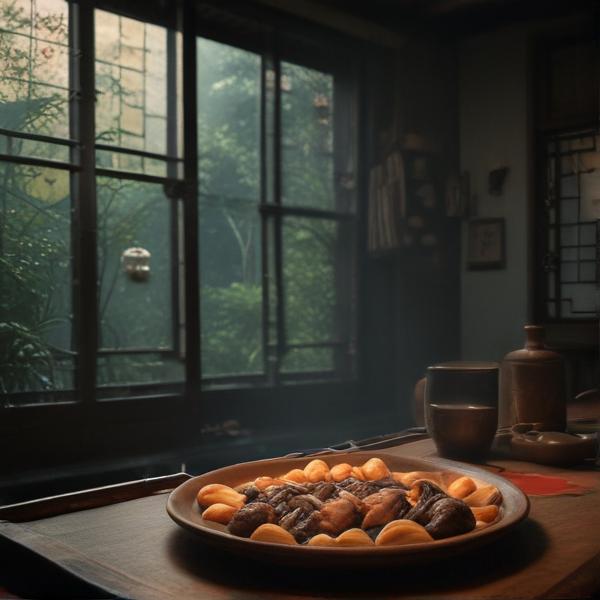基本信息 (Basic Information)
含义与用法 (Meanings & Usage)
中文核心释义 (Core Chinese Meaning): 女子的卧室或内室,闺房,也泛指少女或年轻女子的居处。
英文核心释义 (Core English Meaning): Women's private room or boudoir, inner chamber; also generally refers to a young woman's residence.
象形意义 / 为何这么写 (Pictographic Meaning / Writing Rationale)
文言文释义 (Classical Chinese Meaning)
与现代意义相近,主要指女子的内室,或用作对未出嫁年轻女子的代称。Similar to modern meaning: mainly refers to women's inner chambers, or as a reference to young unmarried women.
深入学习 (In-depth Study)
字源故事 (Origin Story)
字形演变 (Character Evolution)
常用词语和例句 (Common Words & Examples)
闺房 (boudoir, a woman's private room)
她静静地坐在闺房里读书。
Eng: She quietly sat reading in her boudoir.
闺蜜 (best (female) friend, confidante)
她和闺蜜一起去旅行了。
Eng: She went traveling with her best friend.
闺女 (daughter; girl (esp. in northern China))
这位老太太有两个闺女。
Eng: This old lady has two daughters.
相关成语 (Related Idioms)
相关成语信息待补充。Related idiom information pending.
多语言翻译 (核心释义) (Translations (Core Meaning))
- French: chambre de jeune fille, boudoir
- German: Mädchenzimmer, Boudoir
- Spanish: alcoba femenina, boudoir
- Italian: boudoir, stanza privata femminile
- Portuguese: boudoir, aposento feminino
- Russian: женская комната, будуар
- Arabic: غرفة المرأة الخاصة، البودوار
- Persian: اتاق زنانه، بودوار
- Dutch: meisjeskamer, boudoir
- Polish: buduar, pokój dziewczęcy
- Vietnamese: phòng khuê, phòng riêng của nữ
- Ukrainian: жіноча кімната, будуар
视频学习资源 (Video Learning Resources)
通过以下链接在热门视频网站搜索 "闺" 的更多讲解:
Search for more explanations of "闺" on popular video sites:
- 在 Bilibili.com 搜索 "闺 字源 说文解字" (Search on Bilibili)
- 在 YouTube.com 搜索 "guī 闺 character origin etymology" (Search on YouTube)
网络参考 (Web References for "闺") ()
网络内容摘要 (Web Content Summary):
核心含义与起源:“闺”本义指古代女子居住的内室或房间,即“闺房”。该字形由“门”旁和“圭”组成,象形意义上带有“特别打造的门拱”,形状上圆下方,寓意高贵、私密的空间。Main meaning & Origin: The character “闺” originally referred to the inner chambers or private rooms where women lived in ancient China. Its structure combines the “door” radical (门) and the phonetic component “圭”. The original pictograph symbolizes a specially-designed doorway (arched at the top and square at the bottom), indicating nobility and privacy.
有趣的文化背景:由于古代女子多居于深闺,不轻易与外人接触,“闺”也常代指妇女,因此成为妇女的象征性用字,并引申出“闺中”、“闺秀”等表达。Cultural background: In old times, women lived in secluded quarters called “闺”, so the character also metaphorically refers to women and appears in phrases such as “闺中” (in the boudoir) and “闺秀” (talented lady).
- 常见词语:Common words:
- 闺房:女子的居室。“闺房” (boudoir): women's room.
- 闺阁:内室,泛指女子居处。“闺阁” (inner chambers): general term for women's quarters.
- 闺女:女儿,年轻女子。“闺女” (daughter, young woman): refers to girls or daughters.
- 闺秀:才貌双全的女子。“闺秀” (refined/talented lady): describes a woman of both talent and beauty.
易混淆点:“闺”通常特指女性相关空间或女性本人,现代口语更多用于文学、诗词或搭配成语中,日常使用频率不高。Common confusions: “闺” specifically relates to women or their private spaces; nowadays it mainly appears in literary contexts, idioms, or set phrases rather than daily conversation.
整体来看,“闺”展现了中国古代社会对女性隐私和身份的重视,相关词汇多带有温婉或典雅色彩。In summary, the character “闺” reflects the traditional Chinese emphasis on women's privacy and status, with associated words often conveying gentleness and elegance.
闺的解释|闺的意思|汉典"闺"字的基本解释 - 漢典
也作闺阁);闺阃(妇女所居的内室);闺阈(女子居处的内室。即闺房);闺声(来自闺房的笑声) (8) 借指妇女 [woman] 人间不见因谁知,万家闺艳求此时。—— 唐 · 刘言史 《七夕歌》 (9) 又如:春闺;闺阃所无(比喻女子中少有的人才);闺人(妇女);闺妮(方言。指女儿);闺艳 ...
【闺,閨】的甲骨文金文篆文字形演变含义 - 甲骨文研究网 甲骨文密码字典 在线甲骨文字典研究 - 甲骨文研究网 甲骨文密码字典 在线甲骨文字典 ...
附 白话版《说文解字》:闺,特别打造的门拱,上圆下方,像玉圭的形状。字形采用"门"作边旁,采用"圭"作声旁。 文言文名句摘抄 ①名词:王宫中玉作门环的高贵居室。 闺窗 闺房 闺窦 闺阁 闺门 闺范 / 宫居闺处 闺,特立之户也。
更多图片 (闺 More Images) ()
